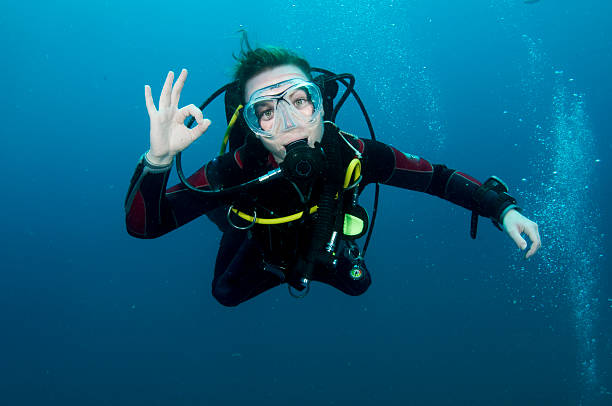Updated February 10, 2022
Learning to Dive – Level 1: The Open Water Diver Course
Once you’ve made the decision you would like to learn how to dive and get a certification, the Open Water Diver Course is the starting point. You’ll learn the basics of scuba diving and how to do it safely.
Training Agencies
There are a number of scuba diving training organizations available, depending on the location, which offer open water diver training. At this entry-level, the courses for each group teach the same diving skills and theory following the standards set by the World Recreational SCUBA Diving Council. I am a PADI instructor and most familiar with their training. Other reputable agencies following these standards are NAUI, SSI, BSAC, RAID, and several others. When you complete the course, you will receive a certification that is recognized around the world and by other agencies should you want to continue training at the next level.
What You Can Do With This Level of Certification
The open water diver training prepares you for dives to 18 meters (60 feet). Until you get some experience or more training you are well-advised not to dive deeper, although you will have some discretion. You are also trained to always dive with a buddy, never alone. With your certification dive operations will be willing to rent equipment and fill tanks for you.
Course Description
There are 4 important areas of focus:
- Knowledge Development – There are text and/or digital materials to be used independently or in a classroom to develop an understanding of the basic principles of scuba diving and the equipment. It is divided into 5 sections.
- Confined Water Training – Shallow water in a pool or protected area is used to learn basic scuba skills. There are also 5 components to this training.
- Open Water Dives – In order to practice the skills you’ve learned, and explore the natural underwater world, there are at minimum 4 dives in open water (not a pool).
- Watermanship – It is also necessary to demonstrate the ability to swim 200 meters and tread water for 10 minutes without using your hands. Different agencies may have some variation on this requirement.
How Much Time to Plan For
Generally, when time is allotted specifically for doing the course on-site, it takes 3-5 days. One limitation is that no more than two of the open water dives can be done on the same day. Some of the training agencies, like PADI, offer e-learning opportunities that allow academic portions to be completed on your own time at home, just leaving the water work to be done accompanied by the instructor. This might only require two days at the dive operation to complete the confined and open water sessions.
The Price for the Course
Some countries and locations are known for low pricing at least partly due to a lower cost of living. In some Southeast Asian and Central American locations you might find the price of a course below $300 with all the materials and equipment included. It is also possible that discounts are available when class sizes are larger. When you are quoted a price you should definitely find out what is included like the student manual, RDP (Recreational Dive Planner), and the use of the scuba gear. It is also possible to get a package deal along with the accommodation or additional dives after the course at a discount or free. It is worth looking into carefully. Many times negotiation can get you a better deal, particularly in the offseason.
For a related post on dive certification, please click here:
Comments and Feedback
I hope you found this post on the open water diver course interesting and useful. If you have any questions or ideas, please feel free to share them in the comments section. If there is no comments section directly below, click here: >>comments<<
